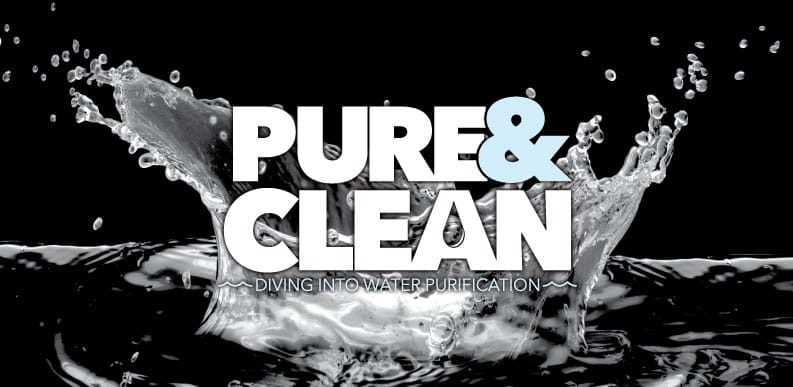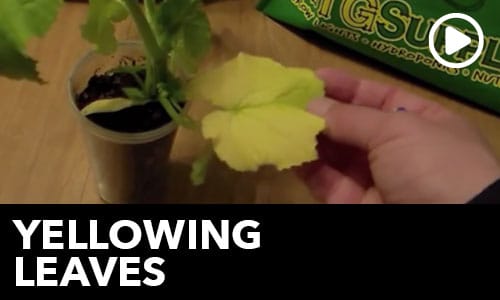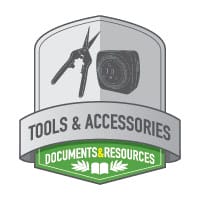Hey there Growers! This week on Talking Shop, we’ll be discussing everything you need to know about Electrical Conductivity (EC). We’ll get into the science behind how it relates to TDS/PPM, how to measure and maintain it, and why it’s important to any successful grow setup! Be sure to read through for the deal of the week as well!
EC = Electrical Conductivity
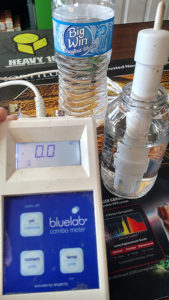
First, let’s look at what electrical conductivity (EC) actually is. Now, you probably already know that water conducts electricity, but the REASON it does so is pretty interesting. In your water, there are usually traces of all kinds of minerals: calcium, iron, potassium, magnesium – your water contains much more than just “H2O”, and those extra particles are actually what conducts electricity. In fact, pure water is a terrible conductor! Distilled water, de-mineralized water, and usually even rainwater will give your EC meter a reading of 0.0, indicating that they contain no trace elements.
When you use an EC meter to take measurements, the meter is reading how much electricity is passing from one electrode to the other – more dissolved minerals = higher EC. These readings are given in units called Siemens, but because they occur on such a minute scale, milli-Siemens (1/1,000 Siemen) or micro-Siemens (µS – 1/1,000,000 Siemen) are used for accuracy.
What is TDS / PPM Then?
If EC tells us what’s in our nutrients solution, and that’s what we’re after – what is the deal with TDS/PPM? Well, what we’re talking about here are actually two different parameters: EC, or electrical conductivity, is the measure of the concentration of conductive minerals in your water, noted in Siemens-per-meter (or S/m). Similarly, TDS (or Total Dissolved Solids) is the measure of the concentration of ALL minerals in your water, noted in PPM (or Parts Per Million).EC = Parameter / Siemens/mS/µS = ScaleTDS = Parameter / PPM = Scale
You may have noticed the similar definitions there, so to avoid confusion we’ll explain further. The difference between EC and TDS is that EC does not accurately measure minerals that aren’t electrically conducive (like sulfur and silicon) or most organic nutrient additives, where TDS does. Take a cup of tea for example. Let’s say you take the EC of your tea and you get a reading of 1.8 – then suddenly someone runs up and mixes in a bunch of sugar! You roll your eyes and take the EC measurement again… and it’s exactly the same. That’s because sugar doesn’t conduct electricity, so it’s more or less ‘invisible’ to your EC meter.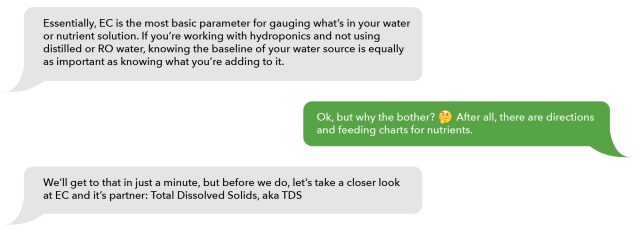
We want to know TDS because we have more than just conductive minerals in our solution – that said, the only way to get a true TDS reading is to precisely measure a specific amount of water, allow all the moisture to evaporate away, and then precisely measure the remaining residue… Most people don’t have the time, equipment, or technical know-how to do that, which is where a TDS meter (AKA – PPM Meter) come in. Because all elements have some electrical charge, it’s possible to approximate TDS level by measuring EC.
Converting EC to TDS / PPM
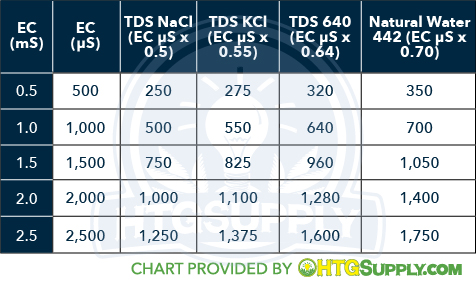
Here’s the trick: consumer-grade TDS meters are actually just regular old EC meters that do a quick conversion for you. The TDS meters you’re likely to encounter will measure the electrical conductivity of your water (in Siemens per meter), and then apply a simple formula to convert that number to parts per million. This is where things get a little more complicated. There are several different conversion factors used to obtain TDS measurements as seen here.
“Alright, now there’s a .5, .7, .55, and .64 involved? Where did those come from?! If TDS isn’t even exact, what’s the point??!!”
Okay, don’t panic. This is the part where most people decide that this stuff is too much, but it’s really not that hard once you have a basic idea of where these numbers originate.
The thing that isn’t always well represented is that, TDS has historacally been used for water-quality testing purposes. Multiple conversion factors were developed because different water source types possess varying natural PPM levels that correlate to their electrical conductivity:
NaCl (.5 scale): based on sodium chloride (salt) – used for seawater, brackish water, high-saline solutions
442™ (.7 scale): based on a combination of natural mineral salts in fresh water- used for wells, rivers, lakes
KCl (.55 scale): based on potassium chloride (very stable salt) – international standard for calibrating conductivity
640 (.64 scale): lesser used scale – ensures the lowest margin of error (15%) for universal application
What we can take from this is – the accuracy of our TDS meter readings will depend partially on the scale we’re using and what exactly we’re measuring. Let’s say we want to measure the baseline TDS of our well water source before we start adding nutrients. The .7 scale would likely be the most accurate scale in this case. Once a TDS baseline is established and we’re ready to measure nutrient solution, using the .5 or .55 scale is typically more appropriate due to the elevated mineral salt levels.
Knowing Your Conversions Ahead of Time
While any of the conversion scales can provide a reasonable approximation of TDS for our purposes, the critical part of all of this is to know what scale is used by; A.) the product(s) you are adding to your solution, and B.) the scale of any calibration solutions you plant to use. If a brand-line feeding schedule recommends PPM levels based on the .5 scale, but your meter is converting at .7 your solution would be under the recommended PPM range. Worse yet, the opposite, where there’s a fair chance you could overfeed your plants resulting in ‘nutrient burn’ or plant fatality! If you make the same error in calibrating your meter, it will result in similar issues.
There is no standard conversion TDS factor for our specific application as of yet, and most common meters still use either .5 or .7 scales (or a combination of both). Consequently, nutrient manufactures often base their PPM recommendations these scales as opposed to their more contemporary alternatives. This is why it’s so important to look into the conversions your meter offers as well as the one used for your nutrient recommendations ahead of time.
It’s also important to note that temperature affects your EC rating (and therefore affects your TDS rating). So when you’re looking for a meter, make sure you get yourself a quality unit that compensates for the temperature.
Why is EC / TDS So Important?
Of course, we understand now that EC & TDS matter because they tell us how much ‘stuff’ is in our water or how much food is available to our plants. So, why not just fill up your system, add the manufacturers recommended dose, and let it run for a week? Several reasons:
Water Quality – As we touched on above, you need to know what’s in your water source. Naturally occurring high EC/TDS levels in your source can cause nutrients to bind or be locked out, which usually leads to deficiencies and poor growth. While you might be ok with a TDS reading under 300, it’s always best to use filtration, particularly a reverse osmosis system. As we mentioned earlier, meters have their limits so using an RO system will ensure a clean solution to start with.
Plant Appetite – Every plant is different – for example, tomatoes can handle water containing double the amount of minerals that cucumbers can as seen in our chart here. Most hydroponic nutrients only offer a general recommendation, which is not exactly ideal for this reason. If you just go by what’s on the bottle, your cucumbers could possibly run into what’s referred to as ‘nutrient burn’ from overfeeding if you were to treat them the exact same way you treat tomatoes. Conversely, your tomatoes yield could end up lacking if you maintain them with the same levels as your cucumbers.
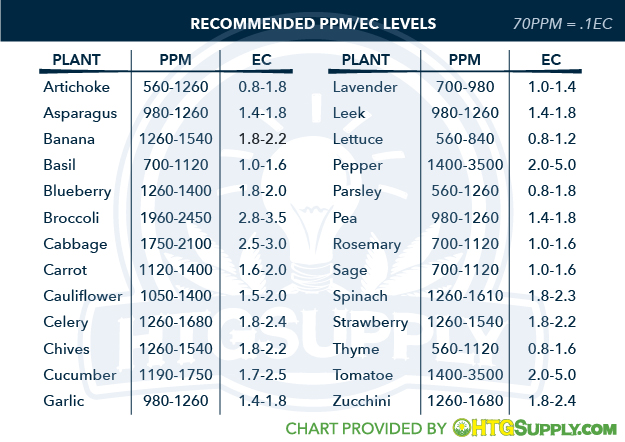
Consumption Rates – Aside from plants having varying nutrient demands from one type to the other, they are also similar to people in that they need more and different food as they grow bigger and older. For example, the general recommendations for a given plant throughout the different growth phases could look something like this:
Seeding/Sprouting – EC = .7 – .9 Vegetative Growth – EC = .9 – 1.4 Flowering/Fruiting – EC = 1.4 – 2.0
It would be great if it was that simple, but plants don’t just jump from one growth phase to the other. Plants grow gradually so jumping directly from one EC range to other may not garner the best results. This is where daily EC/TDS monitoring and adjustments come in.
Your specific plant type will have specific needs, which can even differ among varieties/strains. As they grow, they will absorb different nutrients at different times and at varying rates. This is also why complete solutions changes should be made on a weekly schedule. Adding a bit of food to maintain your TDS throughout the week is fine, but your TDS meter can only tell you how many dissolved solids are in your water… it can’t tell you WHICH solids they are.
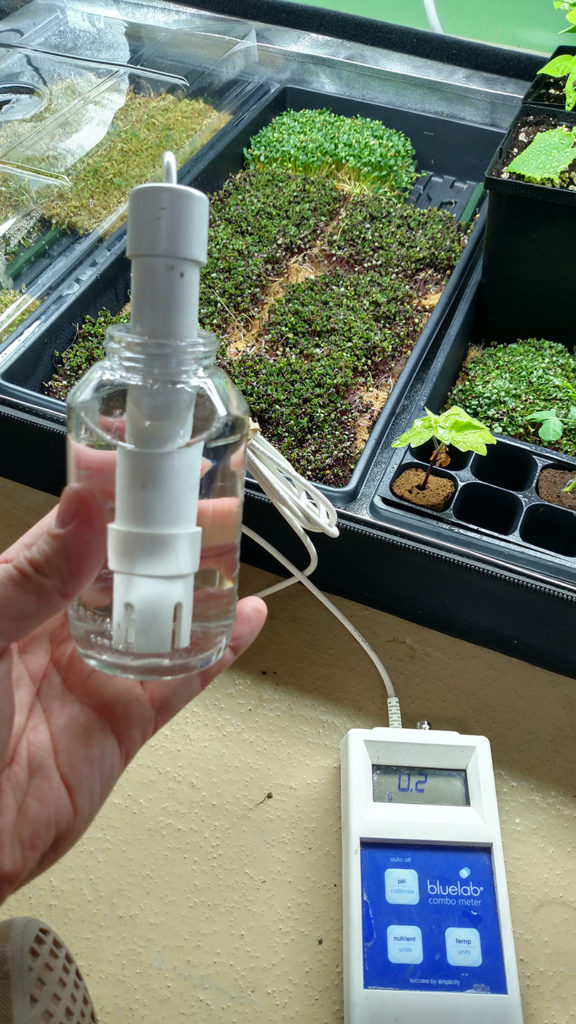
Adjusting to this takes some time to perfect completely – award-winning hydro growers didn’t get there overnight after all. Daily monitoring and maintenance will give you the means to hone in on what works best for your specific plants, and that is the ultimate goal.
Seen here – an EC reading of nutrient solution for small plants and starts. Notice the very low EC (.2) or approximately 300 ppm.
Maintaining EC / TDS
The complicated part of EC and TDS is understanding what is really going on when you measure and or adjust. Once you have a handle on how it works and what your readings really mean, putting your knowledge to use is easy. Using our new mastery of EC/TDS, our best practices are as follows:
1. First and foremost – buy a quality meter. As we’ve learned, there are many variables involved in EC readings. It should also be noted that temperature affects EC so you need a meter that accounts for this factor as well. You could just go and buy the cheapest meter you find online, but chances are that one won’t really cut it for hydroponics.
2. Make sure that your meter is clean and calibrated, AND that you’re using the correct settings and solutions. Cleaning the meter with distilled water if you can, and have a calibration solution that matches your meter’s conversion factor on hand.
3. Always use reverse-osmosis filtered water or distilled water as the base for your nutrient solution. If this isn’t possible, at least start with water that has an EC as close to 0 as possible – you don’t want anything in your water that you don’t know about.
4. Play it safe with the nutrients. Learn about what YOUR plant’s nutritional needs are, and keep in mind that young plants need much less than fully-grown ones. It’s always better to purposely give your plants less nutrients rather than to risk giving them even slightly too much. Our staff growers commonly give their plants half- or even quarter-portions of what the manufacturer recommends.
5. Don’t just add to your grow solution for weeks – REPLACE it weekly. When you test your water and find that the EC has dropped below optimal levels, remember that your plants have only absorbed the nutrients it needed. There are still many chemicals in that water, so adding more will hurt your plant. Instead, empty out the old grow medium and replace it with a new, fresh batch.
6. Finally, keep an eye on your EC levels at least daily. Check every day, and inspect your plant for any signs of trouble. Nutrient burn will cause the tips and edges of your plant’s leaves to fade to yellow, then brown, and they’ll become dry and brittle (similar to the way that tree leaves change in the fall). Nutrient lockout is similar, except your plants’ leaves won’t dry out as quickly and they’ll usually change colors from the center outwards rather than from the edges in.
_____________________
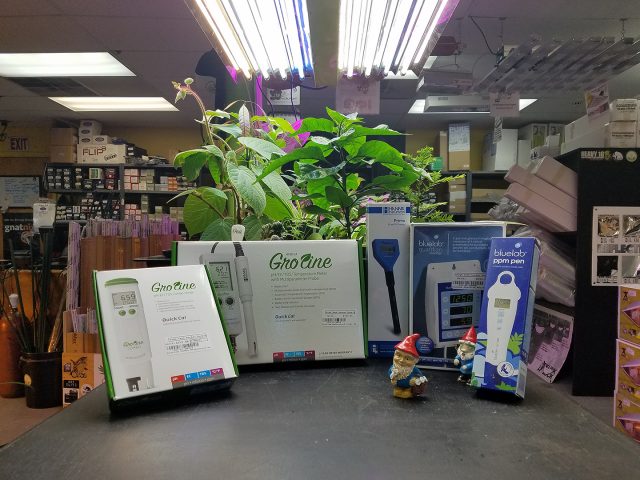
If you monitor the EC in your setup, throw a picture on Instagram and tag us in it (@HTGSupply) – we’d love to see your results! And don’t forget to check out this weeks coupon code and sale information below! From all of us here, good luck, stay safe, and Happy Growing!
THIS WEEK’S COUPON CODE: ECTDS1117
Enter this week’s promo code at checkout for a 10% discount on any EC, TDS, or combo meter including the products featured below, or visit your local store and simply mention this article to get the deal! Thanks again for tuning into Talking Shop with HTG Supply!
By: HTG Supply on 11/03/2017
